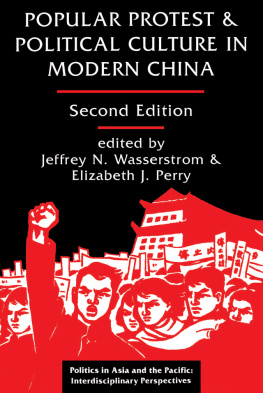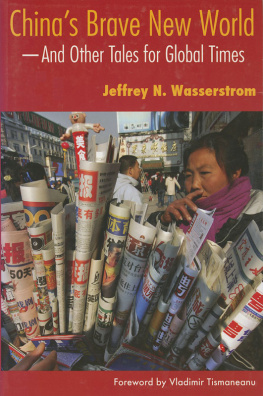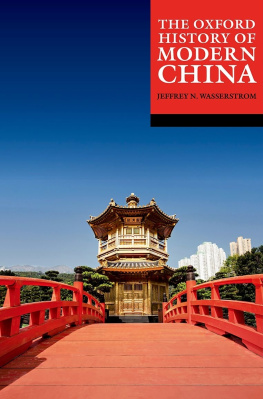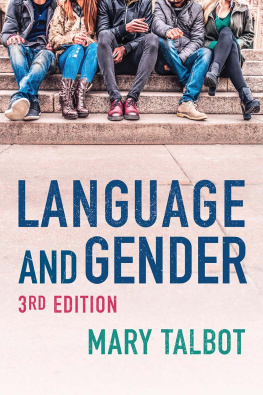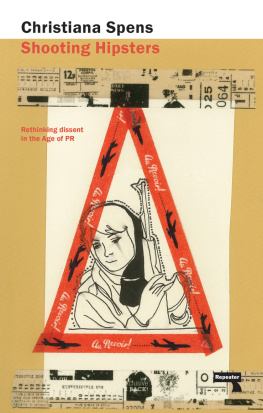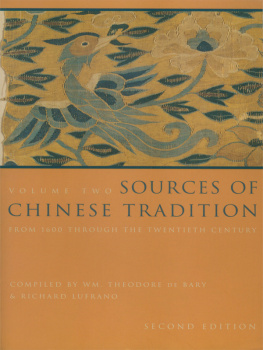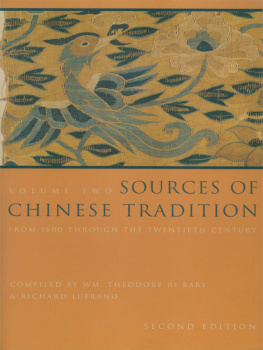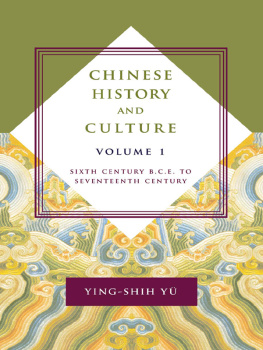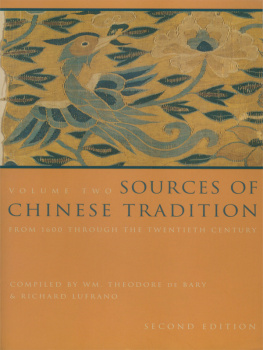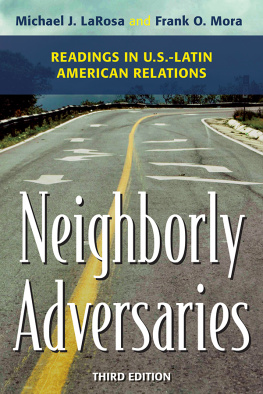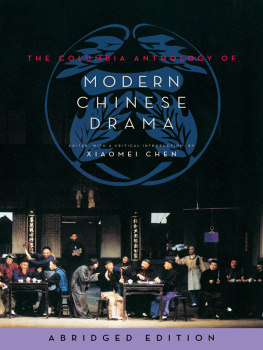POPULAR PROTEST AND POLITICAL CULTURE IN MODERN CHINA
Politics in Asia and the Pacific
Interdisciplinary Perspectives
Haruhiro Fukui
Series Editor
Popular Protest and Political Culture in Modern China, Second Edition, edited by Jeffrey N. Wasserstrom and Elizabeth J. Perry
Southeast Asia in the New International Era, Second Edition, Clark D. Neher
China Under Reform, Lowell Dittmer
Global Television and the Politics of the Seoul Olympics, James F, Larson and Heung-Soo Park
Japan's Foreign Aid: Power and Policy in a New Era , edited by Bruce M. Koppel and Robert M, Orr, Jr.
FORTHCOMING
Japan's Land Policy and Its Global Impact, Shigeko N. Fukai
Mass Politics in the PRC: State and Society in Contemporary China, Alan P.L. Liu
Comparative Politics of Asia, Sue Ellen M. Charlton
Second Edition
Popular Protest and Political Culture in Modern China
Edited by
Jeffrey N. Wasserstrom
Indiana University
Elizabeth J. Perry
University of CaliforniaBerkeley
Politics in Asia and the Pacific: Interdisciplinary Perspectives
First published 1994 by Westview Press
Published 2018 by Routledge
711 Third Avenue, New York, NY 10017, USA
2 Park Square, Milton Park, Abingdon, Oxon OX14 4RN
Routledge is an imprint of the Taylor & Francis Group, an informa business
Copyright 1992, 1994 Taylor & Francis
All rights reserved. No part of this book may be reprinted or reproduced or utilised in any form or by any electronic, mechanical, or other means, now known or hereafter invented, including photocopying and recording, or in any information storage or retrieval system, without permission in writing from the publishers.
Notice:
Product or corporate names may be trademarks or registered trademarks, and are used only for identification and explanation without intent to infringe.
Library of Congress Cataloging-in-Publication Data
Popular protest and political culture in modern China / edited by Jeffrey N. Wasserstrom, Elizabeth J. Perry. 2nd ed.
p. cm. (Politics in Asia and the Pacific)
Includes index.
ISBN 0-8133-2042-9 (HC). ISBN 0-8133-2043-7 (paperback)
1. ChinaHistoryTiananmen Square Incident, 1989. 2. Political cultureChina. I. Wasserstrom, Jeffrey N. II. Perry, Elizabeth
J. III. Series.
DS779.32.P67 1994
951.05'8dc20
94-19867
CIP
ISBN 13: 978-0-8133-2043-4 (pbk)
This volume is dedicated to the unsung heroes and forgotten martyrs of 1989 the farmers, teachers, workers, entrepreneurs, policemen, smugglers, officials, and soldiers who risked their careers and personal safety to help students and other protesters escape arrest, and the city dwellers of all classes who died in the streets of Chengdu and other places far from Tiananmen Square.
Contents
, Elizabeth J. Perry
, Ernest P. Young
, Joseph W. Esherick and Jeffrey N. Wasserstrom
, Elizabeth J. Perry
, Craig C. Calhoun
, Lee Feigon
, Tsao Tsing-yuan
, Andrew F. Jones
, Vera Schwarcz
, Timothy Cheek
, Stephen R. MacKinnon
, Daniel Chirot
, Tony Saich
, Jeffrey N. Wasserstrom
, Liu Xiaobo
, Jeffrey N. Wasserstrom
Guide
When Susan McEachern of Westview Press asked if we might be interested in preparing a revised and expanded edition of Popular Protest and Political Culture in Modern China, we were happy for an obvious reason: Her request indicated that people were buying and (presumably) reading the first edition. We were also pleased for another reason: Ever since the book had gone to press, we had been troubled by a nagging sense that there were a number of ways in which it could have been a more satisfying volume. Because of our belief that it was important to say certain kinds of things about the cultural dynamics and historical resonances of contemporary Chinese politics while the images left by the intense media coverage of the protest and repression centering in and around Tiananmen Square were still fresh in the minds of our readers, the first edition had been put together quite quickly. For the most part we were happy with the results, and we remain convinced that (on balance) it was a good decision to get the collection into print when we did, since many of the essays offered perspectives on the events of 1989 in China that were different in important ways from those provided by most of the other early works on the subject. Nonetheless, we were happy to be given the opportunity to rethink the structure and contents of the book in an effort to make it more effective as a work of scholarship and more useful as a teaching tool.
The main aspect of the first edition that dissatisfied us from the start was the absence of Chinese voices. We were also concerned that since Daniel Chirot was the only contributor whose work typically focuses on countries other than China, his comparative chapter might appear somehow out of place. By the time we actually started working on this revised edition, our list of areas that might be worth tinkering with had grown considerably, thanks to the useful comments we had received from a variety of colleagues who had either written reviews of the book or communicated with us in a less formal fashion about their experiences using the volume in the classroom. It would have been impossible to act upon every suggestion, since the chapters that some colleagues said should be left out of future editions were precisely the ones that others praised most fervently. Nonetheless, we have taken many of their suggestions to heart, and as a result the new edition is different from its predecessor in several ways.
Here it seems worthwhile to describe briefly the four main changes we have made and to offer a short explanation of why we decided not to follow up on some of the other specific suggestions made by colleagues, including that of providing more coverage of three important topics that received comparatively little attention in the first edition: power struggles within the Communist Party leadership, the role that gender plays in political struggles other than student movements, and expressions of dissent (past and present) that have been based in villages rather than in cities. First, the changes to be found in this edition:
- "Learning from 1989" is no longer used as a subtitle for the collection. According to one reviewer, even though many of the chapters were clearly written with the events of 1989 in mind, when taken as a whole, the first edition came across as a more general introduction to contemporary China than the subtitle would lead one to expect. Because the present edition includes two new essays ("Discos and Dictatorship" by Tony Saich and "The Politics of Popular Music in Post-Tiananmen China" by Andrew F. Jones) that focus on developments that have occurred since 1989, the subtitle would be even more misleading now.
- The new edition includes three new chapters that help resolve the issues that concerned us most about the first edition. Namely, the new edition contains two important contributions by Chinese scholars who participated in and observed the events of 1989 as well as a new essay by historical sociologist Craig Calhoun, best known for his work as a social theorist and for his discussions of countries other than China. Calhoun was an eyewitness to the occupation of Tiananmen Square, and the chapter he contributes focuses on twentieth-century Chinese events. Nevertheless, because of his interest in theoretical issues that have tended to attract comparatively little interest in the Chinese-studies community (at least until quite recently), the inclusion of Calhoun's piece has made Chirot's insightful discussion of Eastern European events in 1989 seem less isolated and more a part of the whole.

